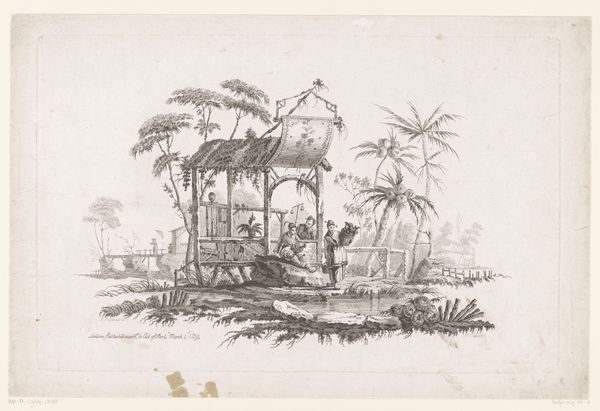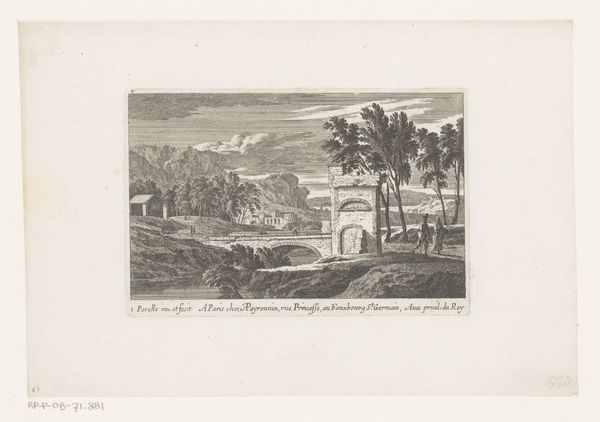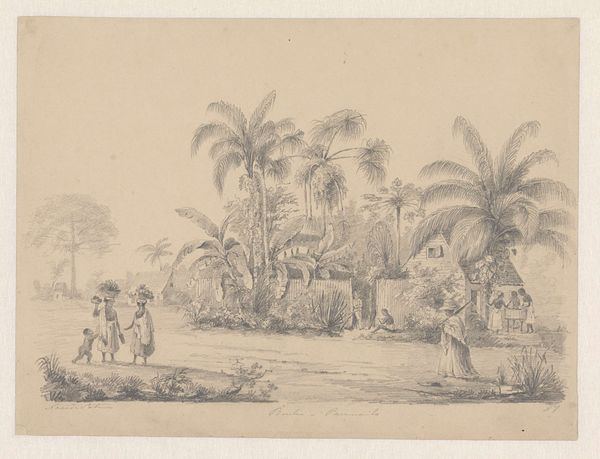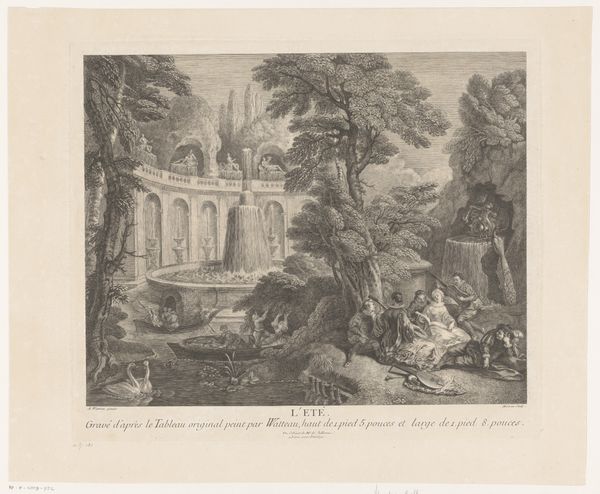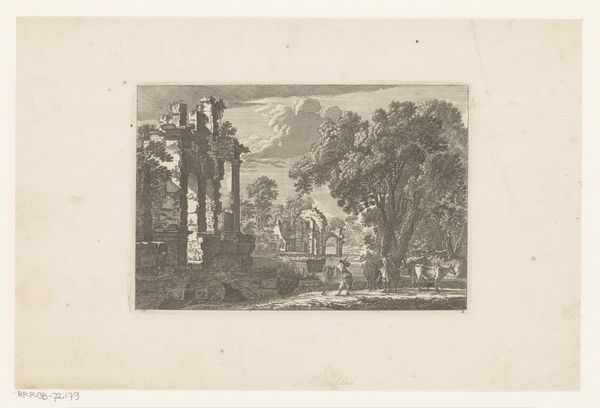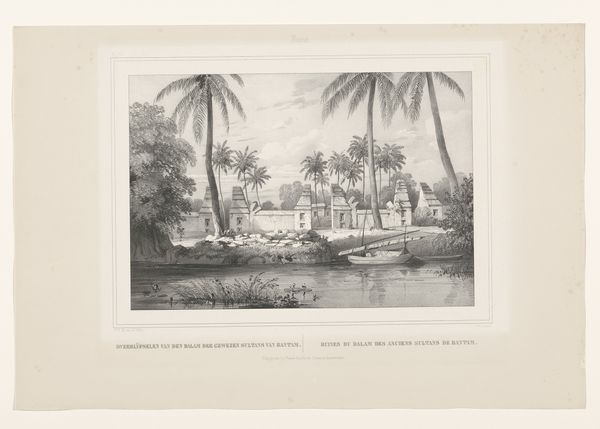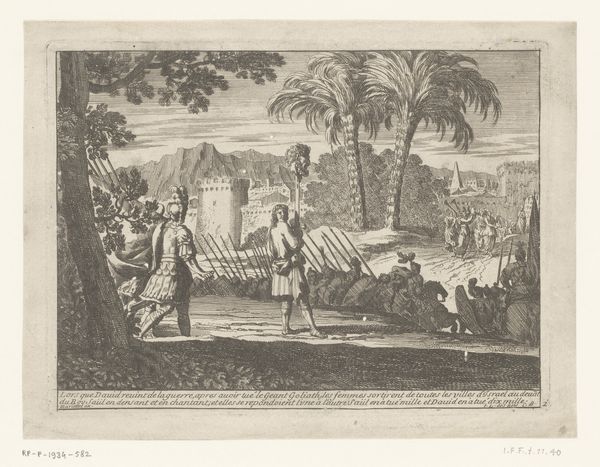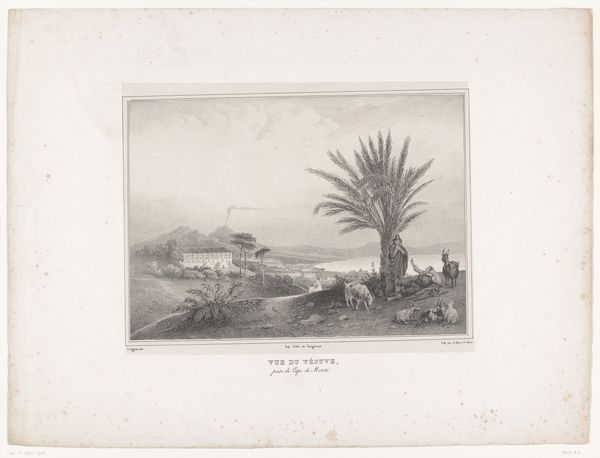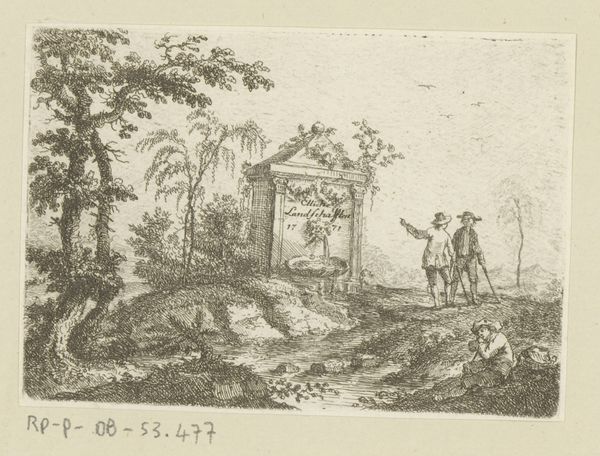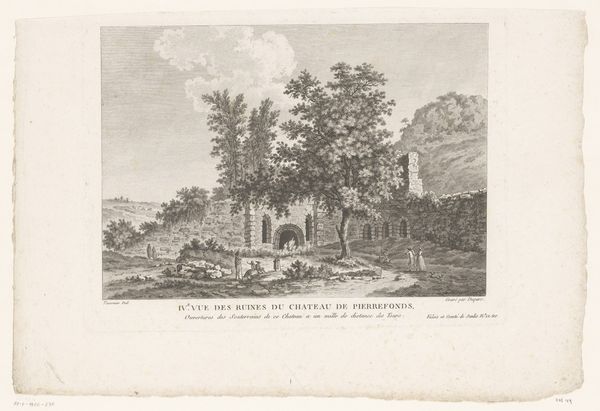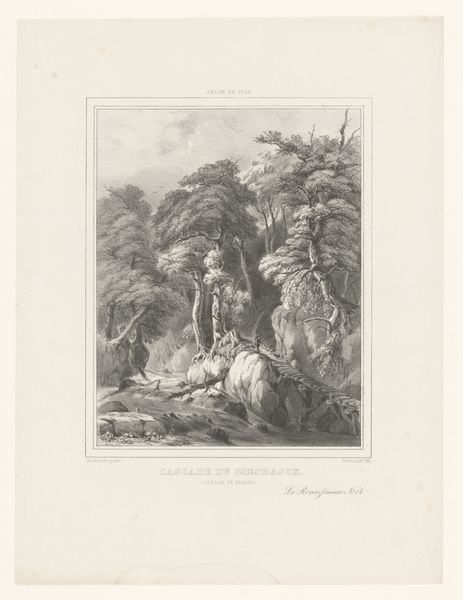
print, engraving, architecture
# print
#
landscape
#
romanticism
#
engraving
#
architecture
Dimensions: height 132 mm, width 212 mm
Copyright: Rijks Museum: Open Domain
Curator: The print before us, dating from 1836-1837, is titled "Tempel van Brambano in Maleisië", or "Temple of Brambano in Malaysia," created by Antoine Joseph Chollet. It’s an engraving depicting a temple ruin amidst a lush landscape. Editor: My first impression is of a kind of serene decay. There’s an almost melancholic beauty in how nature reclaims this structure. It feels like a testament to the transience of human endeavor. Curator: Exactly! That sense of decay taps into the Romantic movement's fascination with ruins. This temple becomes a symbol, not just of a place, but of lost cultures and the inevitable passage of time, viewed through a Western lens. Editor: And it’s carefully staged. Look at the small figures in the foreground; they really emphasize the scale of the temple. They seem to contemplate the immensity of time and history. Is this image aimed at constructing Malaysia for a European audience? Curator: Indeed. Consider the details: the palm trees, the meticulously rendered foliage, and even the architecture. They construct an idea of Malaysia for European consumption, shaping perceptions of its history, its exoticism, and its colonial potential. It creates cultural distance. Editor: The architectural elements are striking. The repeating archways create an echoing rhythm and suggest what the temple’s cultural role may once have been, giving us a sense of continuous time and history embedded in those architectural and human symbols. Curator: Yes, there's an interplay between the ordered architectural design and the organic overgrowth of the jungle, symbolizing the power of nature over civilization. Perhaps reflecting colonial anxieties around imposing western ideals into landscapes quite beyond control. Editor: Right, and that visual contrast amplifies a Romantic era idea: the sublime power of nature to overcome and transform human creations, carrying complex psychological meanings. Curator: Reflecting back, Chollet’s engraving captures a particularly fascinating moment where art, colonial ambition, and the passage of time intersect. Editor: It’s more than just a landscape; it's a potent commentary on the nature of empire and human impact. The temple tells a story—or maybe several.
Comments
No comments
Be the first to comment and join the conversation on the ultimate creative platform.

